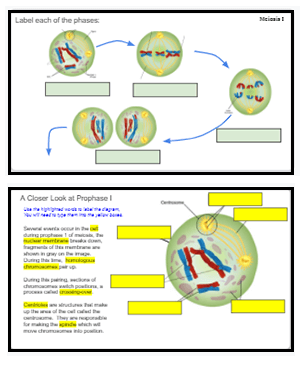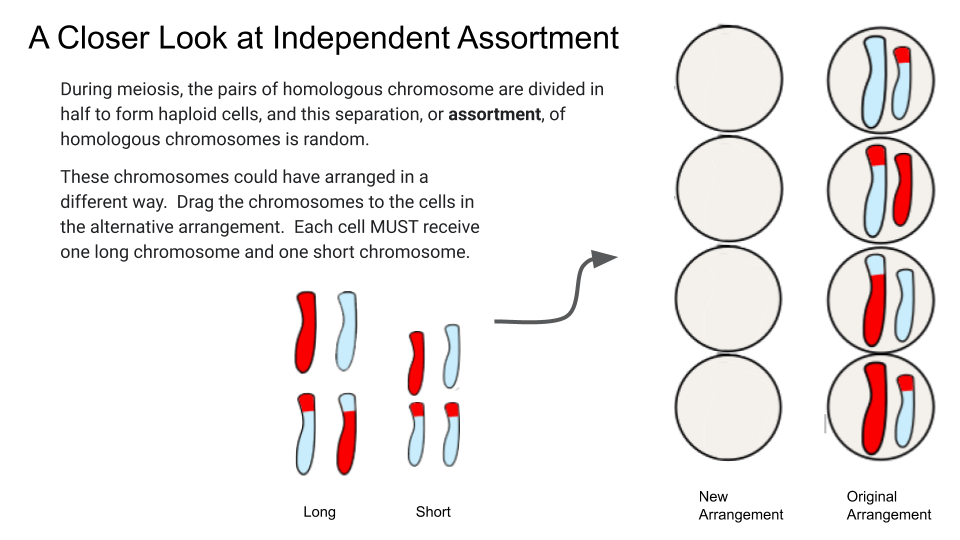![]() Meiosis is a difficult topic for beginning biology students. There’s a lot going on in the cell to ensure that each new gamete receives half the DNA of the parent cell. In addition, each new cell is completely unique. This is the result of independent assortment and crossing over.
Meiosis is a difficult topic for beginning biology students. There’s a lot going on in the cell to ensure that each new gamete receives half the DNA of the parent cell. In addition, each new cell is completely unique. This is the result of independent assortment and crossing over.
Lessons on meiosis generally involve labeling drawings, viewing animations, or even making models, I have used pipecleaners, gummy worms, and popsicle sticks to guide students through meiosis I and meiosis II.
You can even give students microscope slides to view cells undergoing meiosis. The AP Biology version of this lab even has students create their own slides to view meiosis. Though this activity takes time is too advanced for freshman classes.

Using Google Slides to Model Meiosis
In this activity, students move through slides and practice organizing cells in the correct order for meiosis and labeling phases. Students should understand that this process is different from what they learned in mitosis (I also have a drag and drop activity for mitosis).
The key difference is in prophase, where chromosomes pair up in meiosis (but not mitosis). The prophase slide also reminds them of cell features, such as the centrioles, spindle, and nuclear membrane.
As students progress through slides, they answer questions and manipulate images by dragging labels. They can do this in class, or as a homework assignment to be submitted via Google Classroom.
Students determine how many chromosomes are in each cell at the end of meiosis I and meiosis II by counting the centromeres. The last slide attempts to give them a manipulative to help them understand independent assortment. They can drag chromosomes to an alternate arrangement showing how sorting is random during the process. The chromosomes can be arranged in a different formation that what was shown in the previous slide.

Grade Level: 9-12
Time Required: 15-20 minutes
HS-LS3-2 Make and defend a claim based on evidence that inheritable genetic variations may result from: (1) new genetic combinations through meiosis, (2) viable errors occurring during replication, and/or (3) mutations caused by environmental factors.

